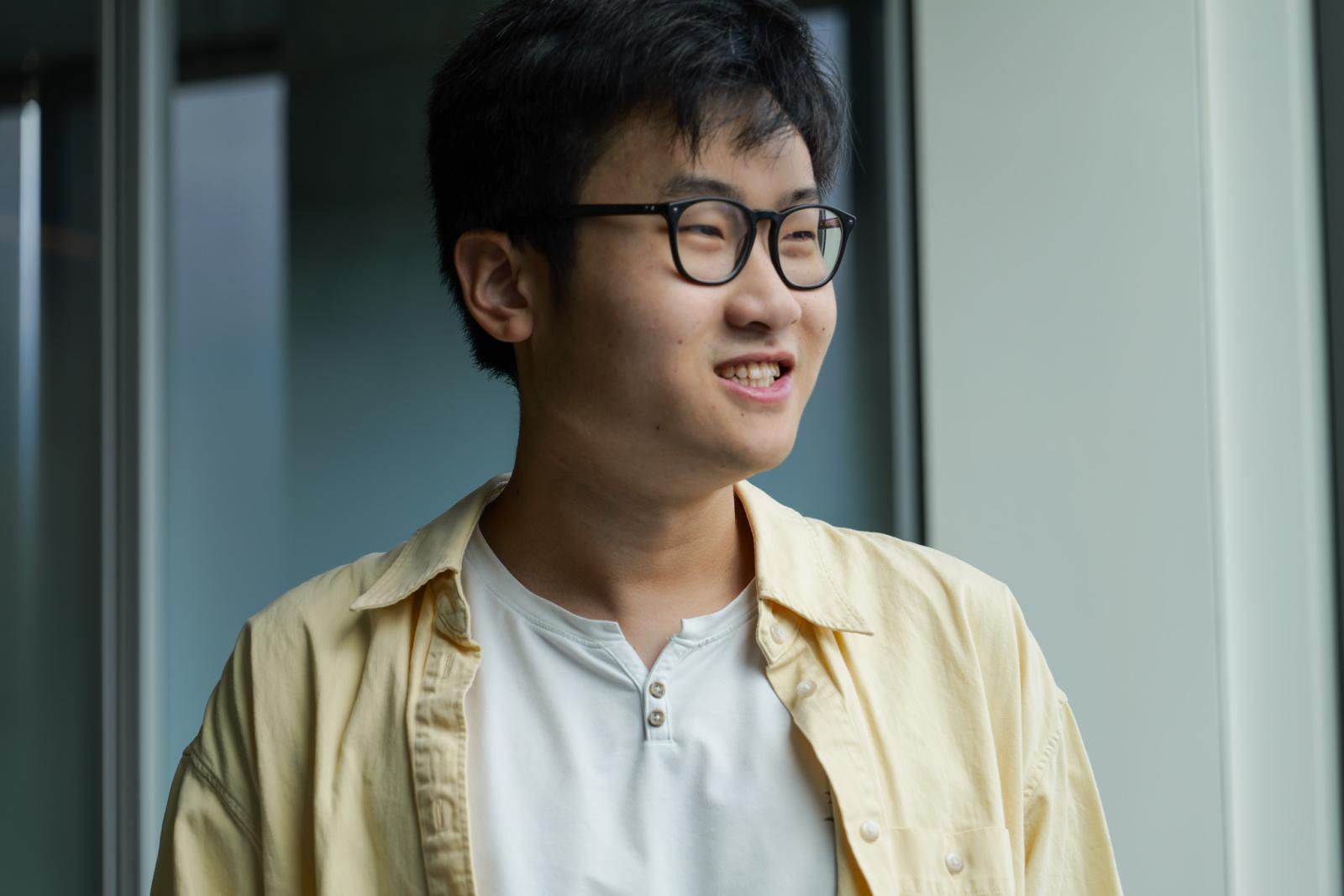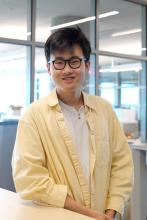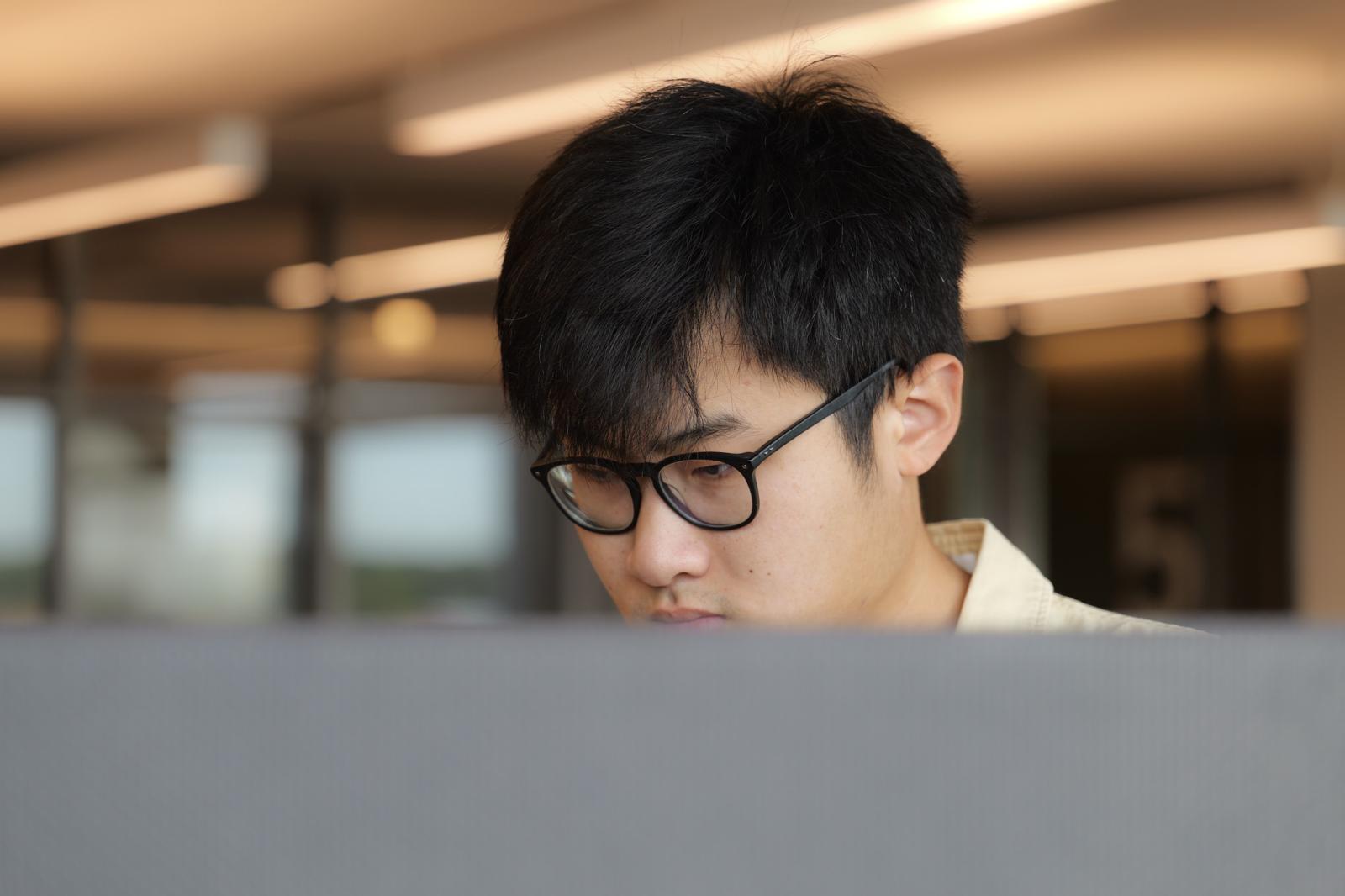Sam Xing takes computational advancement in stride; receives Innovator of the Year Award

These days, it’s easy to feel as though we are in more of a technological tailspin than a revolution. News about applications of artificial intelligence (AI) and data security measures seem to roll out daily. Making sense of the continuous wave of technological advancements, especially as it applies to drug development and discovery, is more important than ever.
That’s where researchers like PhD candidate Enming “Sam” Xing come in. Xing is an advisee of Associate Professor Pui Kai “Tom” Li, PhD, and Professor Xiaolin Cheng, PhD, at The Ohio State University College of Pharmacy. He is a member of Dr. Cheng’s team of computational drug discovery researchers, a group that’s uniquely qualified to harness technological changes in powerful ways.
Computational tools have become ubiquitous in drug development and while Xing is now a maestro of the field, he had no experience with the tools until he began his graduate program.
“In 2019, when I was an undergraduate student at China Pharmaceutical University, I completed an internship with Ohio State’s Dr. Li,” Xing recalled. “I mainly completed drug design and synthesis investigations under Dr. Li and during this time, he introduced me to the idea of using computational tools to make those processes more efficient.”
Thanks to his connection with Dr. Li and passion for synthesis in the context of chemistry and biology, Xing joined the college’s Division of Medicinal Chemistry and Pharmacognosy to pursue a PhD.
Though Xing initially expressed anxiety about learning a new medium of research after years of traditional
techniques, he has impressed his mentors and peers with his computational skills and earned the 2024 Ohio State Next Generation Innovator of the Year Award.

“Medicinal chemistry is not something that you can do in isolation; you can’t just shut yourself away and work."
The Next Generation Innovator of the Year Award recognizes postdoctoral, undergraduate and graduate students who have contributed to the development or commercialization of a new technology or a trainee-initiated start-up whose success is a result of entrepreneurial talent, creativity and energy.
“What sets Sam apart is his exceptional independence and willingness to take on challenges,” Dr. Cheng said. “He is not only the most self-motivated student I have encountered but also the most independent, consistently thinking of innovative solutions to research problems.”
Xing is an inventor on four patent/ provisional applications through the university, with all four applications applying to different therapeutic targets. Of his four credited patents and provisional applications, three address cancer treatment and one is for COVID-19 therapeutics. He has also contributed to six peer-reviewed manuscripts, with two of those being first/co-author publications.
“Working on research that turned into intellectual property was fascinating because I gained an understanding of what drug development projects look like from beginning to end,” Xing reflected. “For the past two years, I’ve done my best to expand my abilities with computational tools to include things like docking simulations and machine learning-related technologies that will help me become a stronger researcher and advance the discovery process with new technologies.”
By successfully adapting his original training as a synthetic chemist to the world of computational chemistry and drug discovery, Xing has become a frequent collaborator on significant drug development projects within the college.
“Having worked in drug development for 16 years, I have not encountered anyone else with Sam’s natural ability to learn new techniques and quickly apply them to relevant drug discovery and development problems,” said Chris Coss, PhD, associate professor in the Division of Pharmaceutics and Pharmacology.

As he enters his third year and with this major award added to his CV, Xing is eager to keep pushing the boundaries of his skills and the world of computational discovery as a whole.
“It’s such an exciting time in the world of technology, with recent attention around methods of computation and AI,” Xing said. “Of course, it’s in early stages, but there’s an opportunity to enhance our existing computational drug development tools with the abilities of generative AI and existing models.”
Xing stands at a precipice of great possibility. He’ll continue his usual work of uncovering novel therapeutics in the Cheng and Li Labs and on the side, will test preliminary methods of AI-assisted drug development.
“In the past two years alone, I’ve learned to not just stick to the learning curve, but to understand the context of my research,” Xing said. “Medicinal chemistry is not something that you can do in isolation; you can’t just shut yourself away and work. I seek collaborations across experts and labs to expand my toolbox and understand what the next problems are that we’ll be solving.”